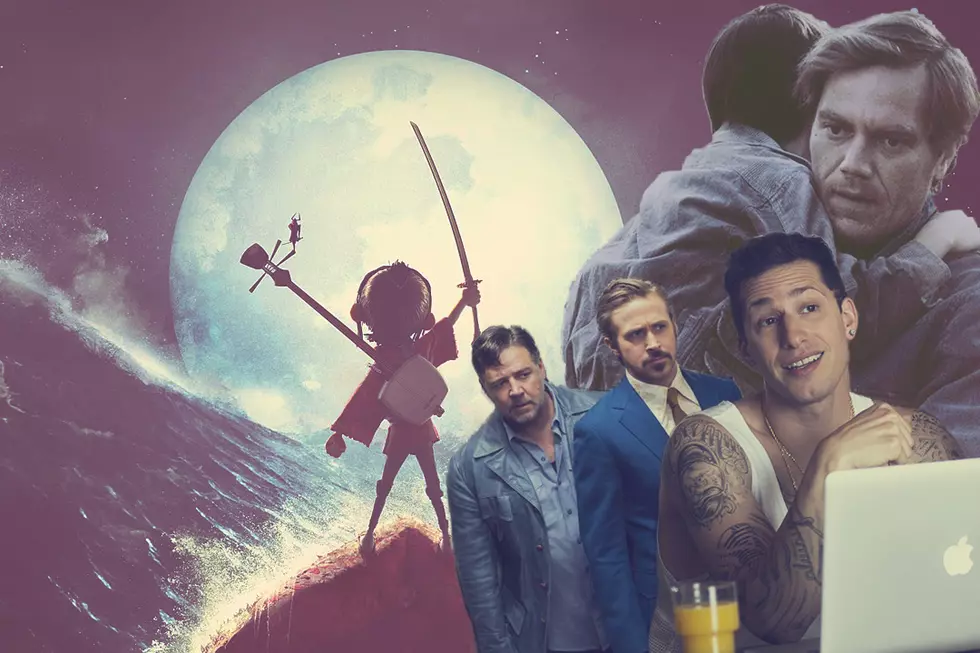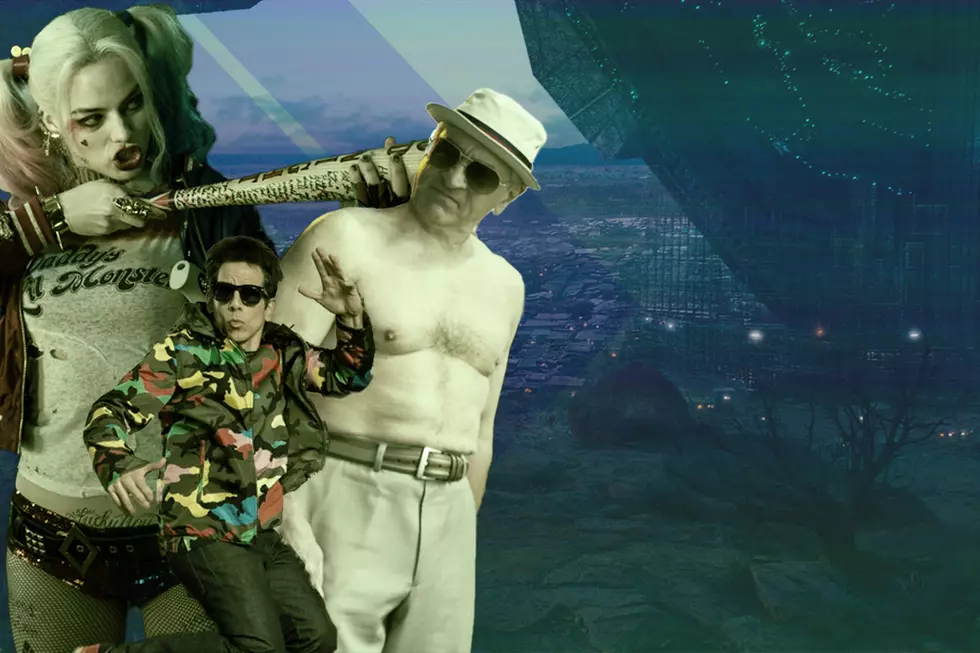
The Best Horror Movies of 2016
Horror is one of the most flexible film genres, encompassing everything from the broadly fantastical to the disturbingly real. Because of that, it’s sometimes hard to nail down exactly what belongs on a “best horror” round-up and what doesn’t. Undoubtedly, genre aficionados will quibble about what’s on and what’s off the list below, not just because of differences of opinion over quality, but because of disagreements over definition.
Green Room, for example, is one of the best films of 2016 in any genre, and has been tagged as “horror,” although it’s really more of a gritty action-thriller — and thus not on this list. The gripping human-vs.-shark picture The Shallows also misses the cut because it’s more of a traditional survival tale than a monster movie. (The semi-supernatural Australian killer-dog movie The Pack would’ve qualified though, had it been a bit toothier.) Meanwhile, there are multiple blood-soaked nightmares here that may strike some primarily as trippy art films, and not genre exercises. Such is the nature of this kind of endeavor.
Whether or not we can agree on our terms, though, we should be in accord on the overall strength of horror cinema in 2016 — both conventional and unconventional. Whatever queasy anxiety has seized the world lately has been channeled onto the screen into some spectacular and frequently highly original visions. It may be that to shed light on what actually happened this year, we need to venture deep into the darkness.
15. Lights Out
Directed by David F. Sandberg
Sometimes all it takes is one great sequence to make a horror film memorable, and Lights Out has a couple of winners, all derived from director David F. Sandberg’s absolutely terrifying 2013 short. Sandberg and screenwriter Eric Heisserer don’t do as good a job of connecting their set-pieces up with a compelling plot or three-dimensional characters, but that doesn’t make it any less squirm-inducing whenever they return to the movie’s big gimmick: a shadowy monster that only approaches and attacks when it’s dark. For years to come, people who’ve seen this film are going to hesitate every night before they switch off their bedside lamps.
14. Clown
Directed by Jon Watts
Before Jon Watts helmed the lively small-town crime picture Cop Car or was put in charge of Spider-Man: Homecoming, he made this gamy little shocker, which sat on the shelf for years before the director’s rising fame made the movie more commercially appealing. To be honest, Clown was always going to be too strange and sick to be even a cult hit. A genuinely disquieting film, Clown stars Andy Powers as a well-meaning middle-class family man who borrows a clown costume for his son’s birthday party, and soon discovers that the outfit itself is a parasitic demon that bonds to its host’s body and compels it to eat children. Watts and his co-writer Christopher D. Ford take the popular horror movie image of the murderous clown and warp it into something much grimmer than necessary, shifting quickly from kitschy satire to all-out nightmare.
13. What We Become
Directed by Bo Mikkelsen
The Walking Dead franchise could learn some things from this low-boil post-apocalyptic melodrama, which forgoes pseudo-intellectual philosophizing about what it takes to survive the collapse of society, and instead just shows one family reacting naturally to the incomprehensible changes happening all around their gated community when a zombie-like virus spreads. Danish writer-director Bo Mikkelsen saves most of his scares for late into the film, and then doesn’t disappoint when it comes to staging ferocious violence and white-knuckle escapes. But the more unnerving parts of What We Become are in the relatively sedate first hour, which sees armed soldiers seizing an upscale neighborhood for reasons they refuse to fully explain, and a group of privileged suburbanites ceding more and more of their and their friends’ freedom, certain that the authorities have their best interests at heart.
12. Train to Busan
Directed by Yeon Sang-ho
South Korea had a major presence in the horror market in 2016, thanks to the twisty, demon-haunted mystery The Wailing, and thanks to this smart reimagining of Snowpiercer as a contemporary zombie story. Set aboard a commuter train where one infected rider starts an undead epidemic, Train to Busan works well just as a gory monster movie. But it’s also a potent commentary on how social divisions hasten the breakdown of order, as some passengers’ self-interest condemns their fellow citizens to a misery that soon consumes even the “safe.”
11. Ouija: Origin of Evil
10. Hush
Directed by Mike Flanagan
It was a good year for emerging horror filmmaker Mike Flanagan, who co-wrote (with Jeff Howard) and directed a strong sequel to Hasbro’s generic supernatural spookfest Ouija, and also co-wrote (with Kate Siegel) and directed the clever home-invasion thriller Hush. The latter film is likely to be more of a calling-card for Flanagan in the years to come, given the way he employs dynamic sound design and shifting perspectives to convey the experience of a deaf-mute (played by Siegel) as she realizes she’s being stalked by a masked serial killer. But it’d be a mistake to overlook Origin of Evil, which takes the standard formula for modern “Holy crap, a haunted thing!” pictures — from creepy kids to fractured families to wizened paranormal experts — and invests each element with actual weight.
9. The Neon Demon
Directed by Nicolas Winding Refn
As a commentary on the model-eat-model competitiveness of the fashion industry, Nicolas Winding Refn’s stylish psychodrama doesn’t really have have much to say that’s surprising or revelatory. But taken strictly as a compendium of freaky visions, The Neon Demon is an aesthete’s delight, fusing the bizarre tableaux of Alejandro Jodorowsky with the tightly controlled splatter of Dario Argento. Though not especially scary, the movie is wonderfully perverse and even witty, while maintaining a surface sheen that even the judges on Project Runway would refer to as “very editorial.”
8. Creepy
Directed by Kiyoshi Kurosawa
This year saw a number of scary movies that started out in one genre — like crime procedural — and then took a hard left turn into outright fright. Both Baskin and Carnage Park are worth checking out for that reason, although neither of those films can top the return of Japanese master Kiyoshi Kurosawa to his art-horror roots. Initially a story about a disgraced retired cop who launches an investigation into his own mysteriously aloof neighbor, Creepy begins to live up to its name once its hero’s past begins to snake its way into his nice new home. As always, Kurosawa makes brilliant use of silence to turn even a detective’s most routine hunt for clues into edge-of-the-seat exercises in suspense.
7. The Invitation
Directed by Karyn Kusama
A horror-steeped spin on the “comedy of awkwardness,” director Karyn Kusama’s The Invitation starts out at a Los Angeles dinner party. There, every festering resentment and buried ache gets dredged up as part of a New Age consciousness-raising encounter that few of the guests actually knew was on the agenda. Eventually, the real motivations for the host’s party games are revealed, and the film becomes a more straightforward thriller. But even when it’s just about well-off Hollywood types open-mindedly playing along with trust-games they secretly hate, The Invitation is an uncomfortable experience, dramatizing every introvert’s worst imagining of what social occasions are like.
6. Evolution
Directed by Lucile Hadžihalilović
As inexplicable as it is beautiful, Lucile Hadžihalilović’s long-awaited follow-up to her arty 2004 feature debut Innocence is just as disturbing as its predecessor, delving into the gender identity, adolescent anxiety, and childhood fears of authority figures via some of the most imaginative body-horror the big screen has seen in a while. Set in a spartan seaside village where pale-skinned alien women perform disgusting experiments on young boys, Evolution can be unpacked as a profoundly askew coming-of-age allegory. Or, for those who just like movies that resemble bad dreams, Hadžihalilović’s imagery can be appreciated just for its jagged textures and repulsive goo.
5. 10 Cloverfield Lane
Directed by Dan Trachtenberg
There’s no real reason — beyond showmanship — that producer J.J. Abrams needs to keep sneaking Cloverfield movies into theaters with minimal build-up. But if Bad Robot must keep playing coy about just what its casts and crews are working on, may all the end results be as entertaining as the tense, unpredictable, almost unclassifiable 10 Cloverfield Lane. Impossible to describe without giving too much away, the film is part prison story, part science-fiction, and part keenly acted examination of the relationship between three very different people stuck in a confined space. Give credit to Mary Elizabeth Winstead, John Goodman, and John Gallagher Jr. for bringing an at-time-preposterous script to life, making every new wrinkle in the plot just plausible enough to care about.
4. Don’t Breathe
Directed by Fede Alvarez
Like It Follows and 2016’s savagely psychedelic indie Antibirth, Don’t Breathe benefits from how well it uses the economically ravaged landscape of Detroit and its environs. But it’s also just a marvelously well-acted and -directed pulse-quickener, with a hooky premise (following a gang of non-evil burglars as they silently sneak around a house owned by a blind man), and a surprising twist that pushes the film solidly into the “horror” category. Co-writer/director Fede Alvarez constructs each cat-and-mouse sequence with an eye toward keeping the audience spatially oriented but uncertain what’s going to happen next. When the film really ramps up in its last act, it becomes a vivid metaphor for how hard it is for folks without money to escape a dire situation.
3. The Witch
Directed by Robert Eggers
Though it’s been dinged by some horror fans for being too mumbly and too subtle, writer-director Robert Eggers’ The Witch has enough of a following that its reputation is bound to grow in years to come. Set in a rugged, rural colonial America, the movie tracks how a deeply religious farmer and his family turn against each other when their baby is kidnapped. Was this the devil’s work, or a divine punishment for their own sins? And what part did the household’s blooming teenage daughter and evil goat play in all this? The Witch takes its time answering those questions, but it builds in intensity throughout, showing how fundamentalists can use faith as a cudgel against themselves.
2. The Eyes of My Mother
Directed by Nicolas Pesce
The Borderline Films collective (the team behind the likes of Martha Marcy May Marlene, James White, and Christine) backed this short, sinister feature debut from writer-director Nicolas Pesce, and Borderline’s predilection for rich visual and aural textures and intense immersive experiences are very much in evidence here. The Eyes of My Mother starts with a scene of stomach-turning violence and then proceeds to show how a reclusive country girl (played by Kika Magalhes) is transformed by both the event and its aftermath. From its stark black-and-white imagery to its unflinching scenes of appalling horror, this film is a striking-looking, daringly “wrong” study of a damaged soul.
1. Under the Shadow
Directed by Babak Anvari
The rare scary movie that’s also a fully realized social drama, this rich Iranian import splits the difference between The Babadook and the films of Asghar Farhadi. It’s as much about how a liberated academic woman copes with the religious strictures of mid-’80s Tehran as it is about the ancient monster that her daughter believes is haunting their bomb-rocked apartment building. The heroine, Shideh (beautifully played by Narges Rashidi), is a former med student whose career has been back-burnered due to her family obligations and the times. Even before she starts seeing the same “djinn” as her child, Under the Shadow is already a compelling story of a culture in transition. When the nail-biting final 20 minutes arrives, writer-director Babak Anvari has established the characters and the setting so well that the audience knows there’s no real escape from the looming horrors of Shideh’s life.
More From ScreenCrush









